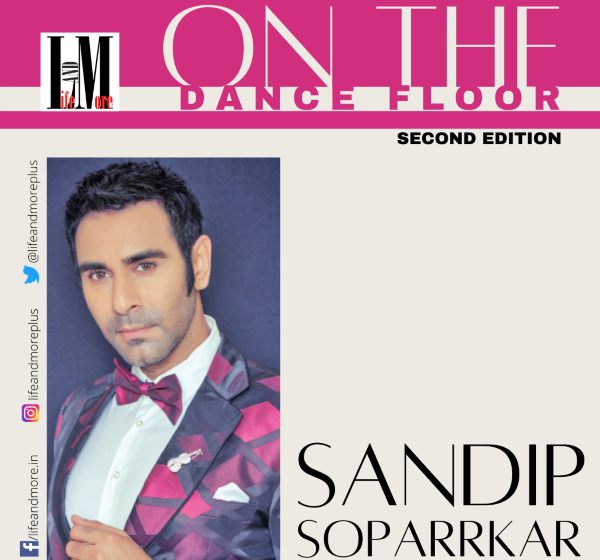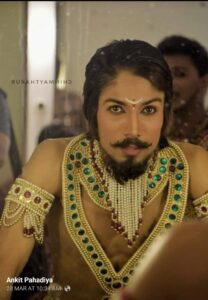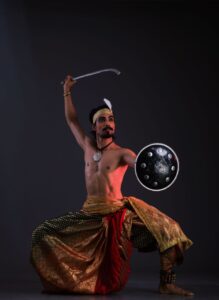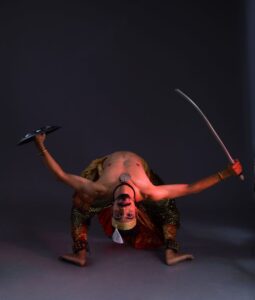Captivating Ankit Pahadiya in search of truth

Classical dance world is filled with politics
It is said that for a dancer to become a true artiste, he or she should experience various phases of life, from initial motivation to starting to learn the art of dance to mentorship and blessings of the guru, ups and downs of the world of dance, politics, setbacks, awards, creative differences to new creations, fears, tears, smiles and laughs, when all become a part of a dancer’s life that is when the real performer starts to blossom.
Today, I want you all to meet Ankit Pahadiya, a highly talented Mayurbhanj Chhau dancer who at a very young age has experienced many highs and lows of life making him an extra ordinary performer. I recently met this extremely hardworking 28-year-old young man and I was happy he poured his feeling out and spoke right from his heart about his humble family background, his struggles and achievements.
Tell us about your background and initial days of learning dance.
Before I started my career in dance, I was preparing for a government job as my uncle worked in the Parliament as security in-charge and my family wanted me to follow his footsteps. However, since my childhood days dance always fascinated me, I often tried to learn by watching Saroj Khanji on television. I even joined a local dance school but my family was strongly against dance as a profession. Despite these challenges, as a teenager I joined Shiamak Davar’s institution in Delhi and alongside practiced yoga and participated in several yoga and dance competitions.
My family came to know about this and totally banned me from dancing and said that if I was to choose dance as profession, they would certainly not help me financially. They even stopped giving me pocket money to punish me. Fortunately, my grandmother secretly paid the fees of Rs 500 without letting my family know. She could not do it for long so I started working at night at a call centre to pay for my dance lessons. In 2008, I joined the Imperial Fernando Ballet Company and trained in ballet under maestro Fernando Aguilera for three years.
How did Mayurbhanj Chhau become your love?
While learning ballet, I joined the Natya Ballet Centre too where I was exposed to Chhau. That workshop blew my mind and I got fascinated by Chhau and my curiosity led me to learn more about this amazing and unique dance form. In 2009, I met Guru Janmey Joy Sai Babuji, a Sangeet Natak Akademi awardee, under whose guidance I started my training for Chhau Dance. He taught me that the Chhau dance form demands meditation and austerity and that this classic form of dance is even deeper than the depth of the ocean.
Every day, I trained under my guru and he gradually polished my skills by teaching me the deep intricacies. Slowly, I started travelling with him for choreographies, conducting workshops and performances. During my training, I joined Bhoomika Creative Dance Centre, run by my mentor guru Bharat Sharmaji from 2013 to 2017. This gave me the opportunity to train in Indian contemporary dance under international artistes which allowed me to improve my theoretical knowledge of dance styles. This helped me tremendously to enter the professional dance arena. From 2016 to 2020, I started my training in Sarikela Chhau Dance under the guidance of Padam Shri Guru Shashidhar Acharya and Sapan Acharya at Triveni Kala Sangam.
Tell us about some of your memorable shows.
As a soloist, I have danced at many festivals and events and some performances are very close to my heart. Chaitra Praba in Orissa where I danced with live musicians, Shilpgram Mahaotsav where I was personally invited by Padma Vibhushan Dr Sonal Mansinghji, Kala Ghoda Festival where my performance was highly appreciated, Voice of Krishna – a dance drama choreographed by Deepak Mazumdarji and directed by Koyel Tripathi where I played the sutradhaar, also my choreography for Hema Maliniji’s Durga and Mahishasur is something I cherish a lot.
I often conduct workshops to promote Chhau all over India, but my best workshops have been with students of Terence Lewis Dance Company and also for core dance members of Hema Maliniji’s dance group, Natyavihar Kalakendra.
What hardships did you face to reach to this level?
I began as a group dancer but because my jumps were higher and body language, expressions, movements and extensions much sharper than others. I was told that I am trying to overshadow others. It was very tough. I did not know whether to take such comments negatively or positively. Finally, I decided to leave the group and be a soloist.
That was the most difficult phase. I went into depression with no work and no income. Obviously, I could not complain or share my feelings with my family because I had made the choice of dance as my profession against their wishes. I stopped attending family functions and meeting relatives.
Dance practice saved my life. I practiced for 16 hours. There were days I could not sleep because during my sleep my body was moving and my mind was obsessed with the thoughts and future goals, making me extremely restless. I would wake up in the middle of the night and would start practice, eagerly waiting for morning to start my lessons with my guru. A time came when I slept without food and did not even have money to travel – but my guru’s words ‘keep patience and things will sort out’ kept me going.
What has been you biggest heartbreak in the world of dance?
Classical dance field is filled with politics. Young artistes do not get a chance to perform at prestigious festivals. Organisers give opportunities to artistes not on merit but only with approach and influence. Many organisers have asked me to perform for free or even worse asked for money to perform. However, I stood strong against such unfair practices and refused. Sadly, it has become a tradition in classical world to pay and perform.
Today, Ankit is on his difficult but individual path, far from politics and continues to focus on gaining knowledge and exploring art. We are proud of his work and achievements despite all the challenges, let us look positively to the future of this talent box who is a unique performer in search of truth for his beloved Chhau Dance form.
Sandip Soparrkar is a World Book of Record holder, a well-known Ballroom dancer and a Bollywood choreographer who has been honoured with three National Excellence awards and one National Achievement Award by the Govt of India. He is also the recipient of Rabindranath Tagore Prize for Social Achievement. He can be contacted on sandipsoparrkar06@gmail.com





